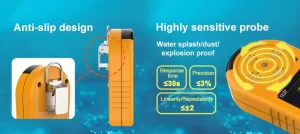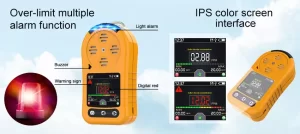The world has made rapid advances in gas sensor technology over the past few decades. As industries and other sectors become increasingly reliant on sensing, measuring, and monitoring gas concentrations, the development of innovative and reliable gas sensors has become a key priority. In this article, we will discuss the recent advances in gas sensor technology and the impact these advancements have had in various industries.
Gas sensors are used to detect the presence and concentration of a variety of gas molecules. These sensors typically employ a combination of the electrical, magnetic, and optical properties of gas molecules, allowing them to accurately detect and measure the concentration of various gas components. This technology has enabled industries to better monitor the environment, detect hazardous levels of gas, and maintain a safe working environment.
In the past decade, there has been a significant amount of research and development in the area of gas sensor technology. This research has resulted in the development of advanced, highly sensitive devices capable of detecting very low concentrations of gases. These sensors are not only more sensitive than those in use before, but also significantly more reliable. This has enabled industries to better monitor and maintain safe air quality levels.
Another major development in gas sensor technology is the use of nanotechnology. Nanoparticles are being employed in the development of gas sensors to allow for increased sensitivity and accuracy. Nanoparticles are able to interact with gas molecules in a way that traditional sensors can’t, allowing them to detect very low concentrations of gases. Additionally, nanosensors can be combined with other sensing technologies to allow for greater accuracy and reliability.
In addition to advances in gas sensor technology, there has also been a great deal of research into wireless communication technologies. The use of wireless communication enables sensors to communicate with one another, allowing for improved accuracy and reliability. Additionally, the use of wireless communication in gas sensor technology has enabled remote monitoring of gas concentrations, allowing for better overall safety.
Gas sensor technology has become an essential part of the industrial world, and its advancement has enabled improved safety and accuracy in various sectors. As industries become increasingly reliant on sensing and monitoring gas concentrations, it is essential that they continue to invest in and develop advanced, reliable gas sensor technology. With advances in gas sensor technology continuing to be made, it is likely that industries and other sectors will benefit from improved safety and accuracy for years to come
 : +86 155 8830 2704
: +86 155 8830 2704 : jxdziot@gmail.com
: jxdziot@gmail.com
